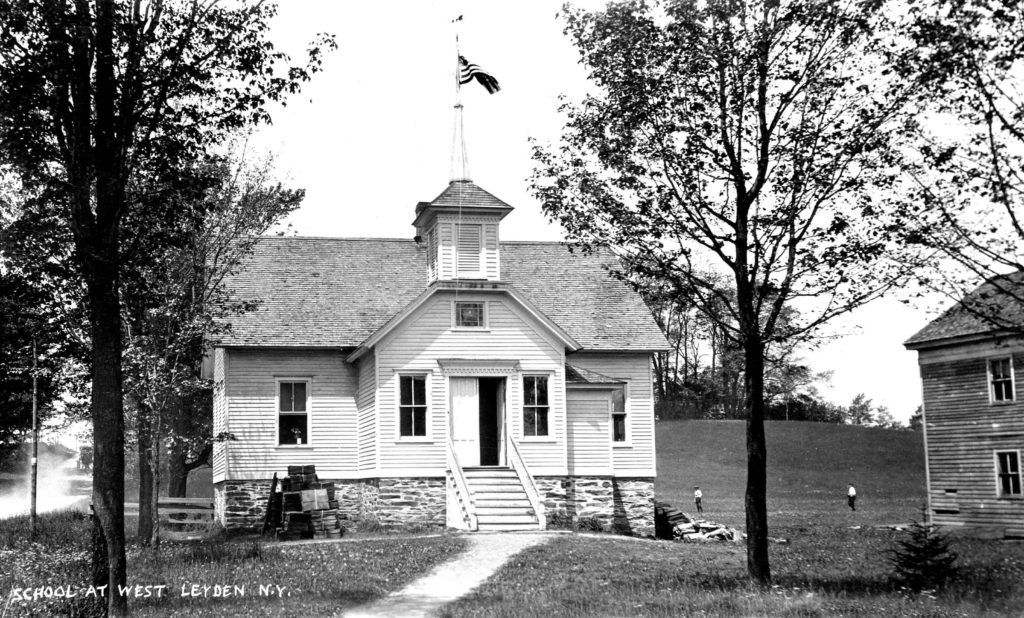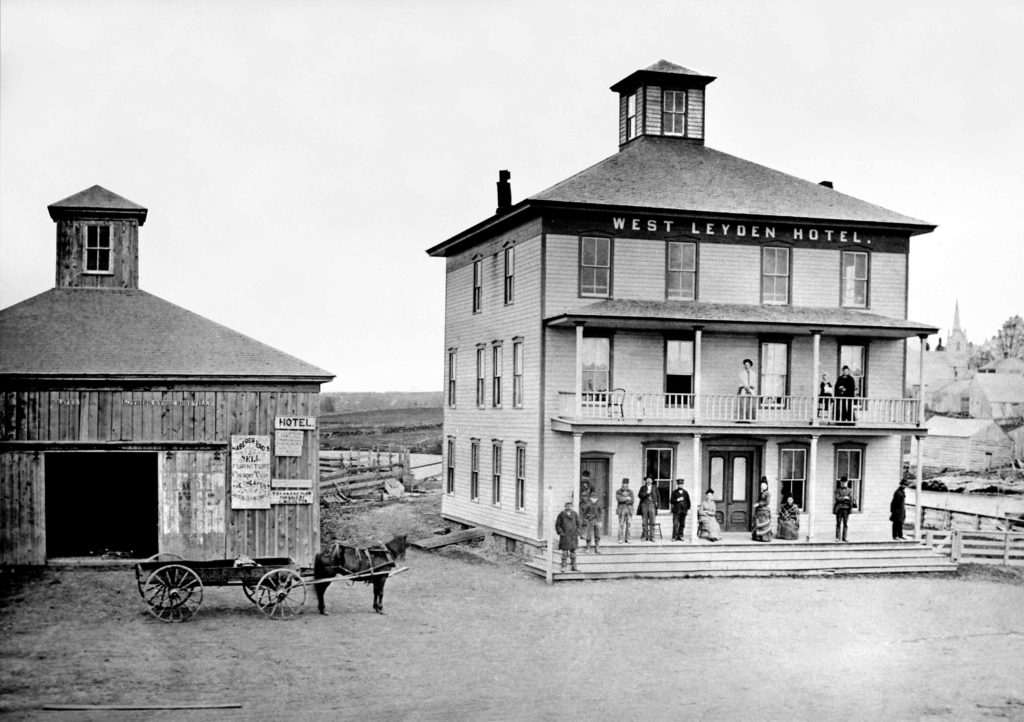The town of Lewis was formed from the towns of Leyden and West Turin on November 11, 1852. It was named after the county, which was named after former Governor Morgan Lewis. Located at the southernmost tip of the county, its many streams form the headwaters of the Mohawk River.
During the late 1800s and early 1900s, lumbering was a vital part of the town. Among the sawmills were: Swancott’s Mills; Eames & Bridgman; John Seiter & Son; JC Lumber Co.; Rimiller’s; and Fey’s. Today, Fey Manufacturing stills operates, making hand-crafted furniture.
Farmers were numerous, however in recent years the number of active dairy farms has dwindled to less than 10. In 1900, the town had six operating cheese factories: Ernst’s; Crofoot Road Factory; Hayes’ Factory; Spring Rock Factory; Mud Lake Factory; and the West Leyden Cheese Factory. The West Leyden Producers Co-op was formed in 1934. The Milk Plant closed in the late 1960s and is now a tavern.
The first post office was located in Schmoker’s Store, opening on November 12, 1897. Rural free delivery began on July 1, 1903. Henry Schmoker, postmaster and storeowner, sent out store circulars so everyone received mail that day. A telephone connection between Rome and Boonville via West Leyden was completed in September 1882. This is said to be the first telephone service in the county.

In 1925, when the New York State Legislature amended the State’s Education Law to provide for the establishment of central rural schools, Winfield Trainor saw the opportunity to bring better education to the children of the town’s ten rural districts. Under his leadership, in 1926, the West Leyden Central School District was formed. It was the first such school district in the county and one of the first few in the State. That first winter, pupils were transported to West Leyden on enclosed horse-drawn sleighs heated with charcoal burners. The first graduating class was in 1930 and the last graduating class was in 1970. In 1966, West Leyden Central School consolidated with Boonville and Forestport to form the Adirondack Central School District.
In 1806, a Congregation Church was built. A Baptist Church was built in 1837. The Reformed Church was built in 1861. This church still holds weekly services. That same year, German immigrants, built a stone church, St. Mary’s, in Prussian Settlement. This was closed when, in 1926, St. Mary’s was built in West Leyden. In 1941, the church in Prussian Settlement caught fire and was badly damaged and torn down. St. Mary’s in West Leyden was destroyed by a gas explosion in 1971. The present St. Mary’s was built at the same location.
The West Leyden Grange No. 620 was organized in 1890. In 1926, the Grange Hall was built. For many years, meetings, dances, roller-skating and other community events were held there. In 1958, the Grange disbanded. Today, the Grange Hall is a trading post.
The Rescue Fire Company No. 1 was organized in 1897. A collection was taken to purchase a hand-drawn pumper. In 1947, the West Leyden Volunteer Fire Department was organized. Field Days were held each year until 2002 when insurance costs and lack of workers ended the events. Water cross snowmobile races on the Mohawk River pond were some of the first events of their kind. Huge crowds came to them.

The West Leyden Hotel, built in 1898, still stands at the intersection of State Route 26 and the Osceola Road. Originally, the hotel’s dance hall was elevated to a second-story. Beneath it was a meat shop, blacksmith shop, livery stable, and the barbershop. Dances were held that attracted people from miles away. Roller-skating and masquerade parties were also held. Horseracing was also held behind the hotel. The current baseball diamond was once a 1/3 mile track. The dance hall was lowered to its present location in 1949 when fire codes prohibited dances on the second floor.
